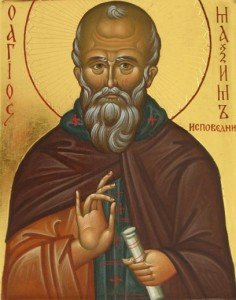Central to the Christology endorsed by the early councils was the vision of Christ as both the eternal LOGOS (Word) and the “New Adam,” who restored the unity of the whole humanity with himself as the divine model according to whose image human beings were created in the beginning.
In order to truly understand this, we must remember that there is no time in God and, therefore, God has been incarnate – has taken on human flesh in the Person of the Son – from all eternity, although it took place in human time. God has never been without a Second Person Who has a glorified human body. We were created in the image and likeness of the Son of God.
This calling us to be like Jesus Christ could not be automatic or magical: it required free human response to the Spirit and the cooperation of each human person and a “gathering” of free believers within the assembly of the Church. The “whole Christ” is manifested where two or three are gathered in his name and where, therefore, the Pauline image of the Body is concretely present. Indeed, that “Body” is the church realized most fully in the Eucharist.
Participation in the Eucharist was defined in christological terms: is was a participation in the resurrected and glorified humanity of Christ, assumed in the hypostasis of the Son of God and – in virtue of the “communication of idioms” between the two natures – penetrated with divine life, or ”energies,” or “grace.” Since in Christ, there was no confusion of essences or natures, neither were “those in Christ’ partaking of the “essence” of God, but of his human nature.
I know that this may seem confusing. I am talking, of course, about the Divine Plan conceived from all eternity. God always was incarnate, even though we human experienced it in time. He always had a plan for human beings – a plan which involved providing men and women with free will to choose to grow in the image and likeness of the human being that represented what He intended all human beings to be like – namely Christ the eternal Logos of God. God created humans in the image of Christ, His Son, and provides, through life, the necessary opportunities to grow in the likeness of Christ. Thus the meaning and purpose of life. A wonderfully devised plan to allow His creation to come to a voluntary response of love to His love!

